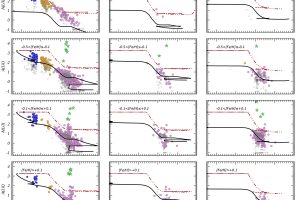Lithium abundance and stellar internal structure. The study: “The Gaia-ESO survey: Mixing processes in low-mass stars traced by lithium abundance in cluster and field stars” of L. Magrini (INAF – OA Arcetri) recently appeared on A&A

The chemical history of Lithium abundance in the Universe is very complex. This chemical element has been first produced during the Big Bang, even if in very small quantities compared with hydrogen and helium. Since then, lithium is continuously created and destroyed by several processes occurring in stellar interior. This means that the lithium abundances we observe in stars today
» Read more
